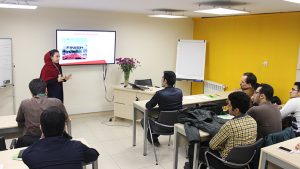
An Observing the Tea Land
The right decision in marketing is possible only through market research and measuring the needs, wishes and interests of customers. Emrooz Market Research Corporation (EMRC) has identified four types of research to provide such services: 1. Longitudinal research in the field of lifestyle and consumption attitudes (TGi); 2. Monitoring the retailer (X*POS); 3. Monitor advertising on TV and the press (Ad*X); 4. Longitudinal study on TV viewers’ ratings (X*Trim).
The following is a summary of the review of the performance of TV commercials in the beverage group in 1395 (2016/17).
TGi Speaks about Lifestyle and Attitude of Tea Consumers
Two centuries have passed since the time when Kashef Al Saltaneh (a French educated Iranian diplomat) and his aides suffered a lot of trouble by carrying tea shrubs to the heart of the tea drinkers’ land. During this time, the Iranians have shown that to quell their thirst only by drinking tea. From the summer sweating to the winter cold, by drinking a cup of tea, all the hardships will be forgotten.
Tea drinking is part of a lifetime of ninety percent of Iranians who prefer steamed tea to tea bags (roughly two to one). Among the various types of tea, black tea stands on the top followed by green tea and flavored tea with a sharp distance respectively.
Apparently the strong pulse beat in today’s daily life has made tea drinking to resort to teabags. In cities such as Tehran, Mashhad and Tabriz, teabag has more influence but in southern and western cities of the county it is rejected. However, people who drink too much tea prefer steamed tea to teabags.
Another interesting point is the dramatic difference between packed tea drinkers and unpacked bulk tea drinkers. Almost half of the consumers are concerned about brands, one-third of them are loyal to a certain brand, and the rest would use try any type of tea. The priority of using tea brands is not the same throughout the country; the top brands in the cities such as Ahwaz, Tabriz and Tehran are slightly different.

X*POS Speaks about Iranian Tea Market
According to X*POS research, tea is still the most popular drink in Iran. Iranians with a per capita consumption of 1.5 kg per annum, are the fourth largest tea consumers in the world. According to last year’s statistics, total tea consumption has been on the rise compared with last year. Although Iranian tea is of the high quality in the world, but in addition to 135 domestic companies, there are 140 foreign companies in the market, and contrary to the apparent calm, there is a breathtaking rivalry! In this competition, Golestan Company is the leading one followed by Ahmad and Do Ghazal, and at next levels, Mahmood and Twining and Debsh.

Ad*X Speaks about TV and Print Media In today’s luxurious world which is filled with numerous voices to communicate with customers is like screaming in a blacksmith market. Amidst these voices, it’s interesting to know that companies have allocated a large portion of their budget to television from among the three options of TV, daily newspapers, journals.
Like an insatiable ocean, TV alone swallows 99% of the companies’ advertising budget in these three media. With the autumn winds blowing, corporates’ advertising budgets arrive on the TV land, and roughly half of the investment is made in autumn, particularly in November.
Company strategy in TV advertising too is different:
· Some, like Lipton, keep their presence throughout the year in the realm of advertising, others like Captain shine like comet stars within a certain time range, until another occasion comes up.
· Companies like Lipton and Captain focus their budget on older TV channels (Channels one, two, and three), and a company like Shahrzad invests almost all its advertising budget on the newly launched channel of Nasim.
· Apparently, companies have a consensus to advertise in peak hours, when more family members are watching TV. Shahrzad spends 92 percent of its budget, and Lipton and Captain, spend 64 percent and 59 percent of their budget at peak hours, respectively.
· Some commercials are broadcast in the middle of most popular programs like Navad (Ninety in Persian language, referencing the standard duration of an association football match). Some others appear on the TV screen at the end of the program.
· The brand strategy is different depending on the advertisement’s exposure frequency: at the beginning, in the middle, or at the end of the program. Shahrzad has spent 32 percent of its budget on advertising at the beginning of the program, and the rest of the budget on commercial in the middle of the program. The figures for Captain brand, are as follows: 77% at the beginning of the program and 20% at the end of the program. It is obvious that advertising at the end of the programs is less appealing to companies, since the maximum advertising budget of companies does not exceed 3% of their total advertising budget.
· Companies are also different in delivering the content of their messages: Some have targeted the faculty of tea drinkers and attempt to provide information in this respect; some brands try to convey a sense of trust in happiness after using the product; for example, Lipton spent 71% of its advertising budget on “cognitive” ads and 29% on “emotional” ads. The ratio for the Captain brand is 59% to 41% respectively.
All of these strategies are based on the audience spectrum of TV channels and programs, and the choice of the right strategy, ensure that the right audience hear the right sound at the right time.

X*Trim Speaks to the Audience about Advertising
Like a golfer who hits the ball and watches its course to see it will hit the target, it’s likewise important for the tea producers and distributers to make sure the audience will hear about and see their advertisements.
In X*Trim’s longitudinal research, some data has been collected to measure TV viewers’ ratings at different times over 24 hours. Data such as GRPs, the duration of the broadcast, the number of broadcast advertisements, the average chance of being watched, the percentage of audiences available, and so on. By evaluating all of these components, it was shown that more payment does not necessarily mean more success and that adopting an appropriate advertising strategy can achieve much more than spending big money.
The Captain brand by spending 44 percent of the cost has earned 51 percent of the GRPs, and emerged the winner of advertising campaign in the industry. For example, although Captain tea brand, by spending only one third of the advertising cost on Channel three, earned only one sixth of the GRPs, however, it earned one fifth of the GRPs by spending one-thirtieth of the advertising cost on IRINN (news network)!
This choice of different strategy in the type of advertisement has produced different results for the brands. The Captain brand has focused more on the advertisement mark, while the Lipton brand has preferred the use of TV teasers.
It’s interesting to know that at some point in time, the Captain brand has ended up in GRPs very close to that of the Lipton brand, with only one-fifth of the cost Lipton spent! The difference here is that the Lipton brand focuses its attention on the banner ads, and the captain’s brand on the teaser.
All of this research is aimed at preparing the ground for sending a clear message: A message which could be visible to the audience by spending the least cost, at the most appropriate time and for the most talented audience.






